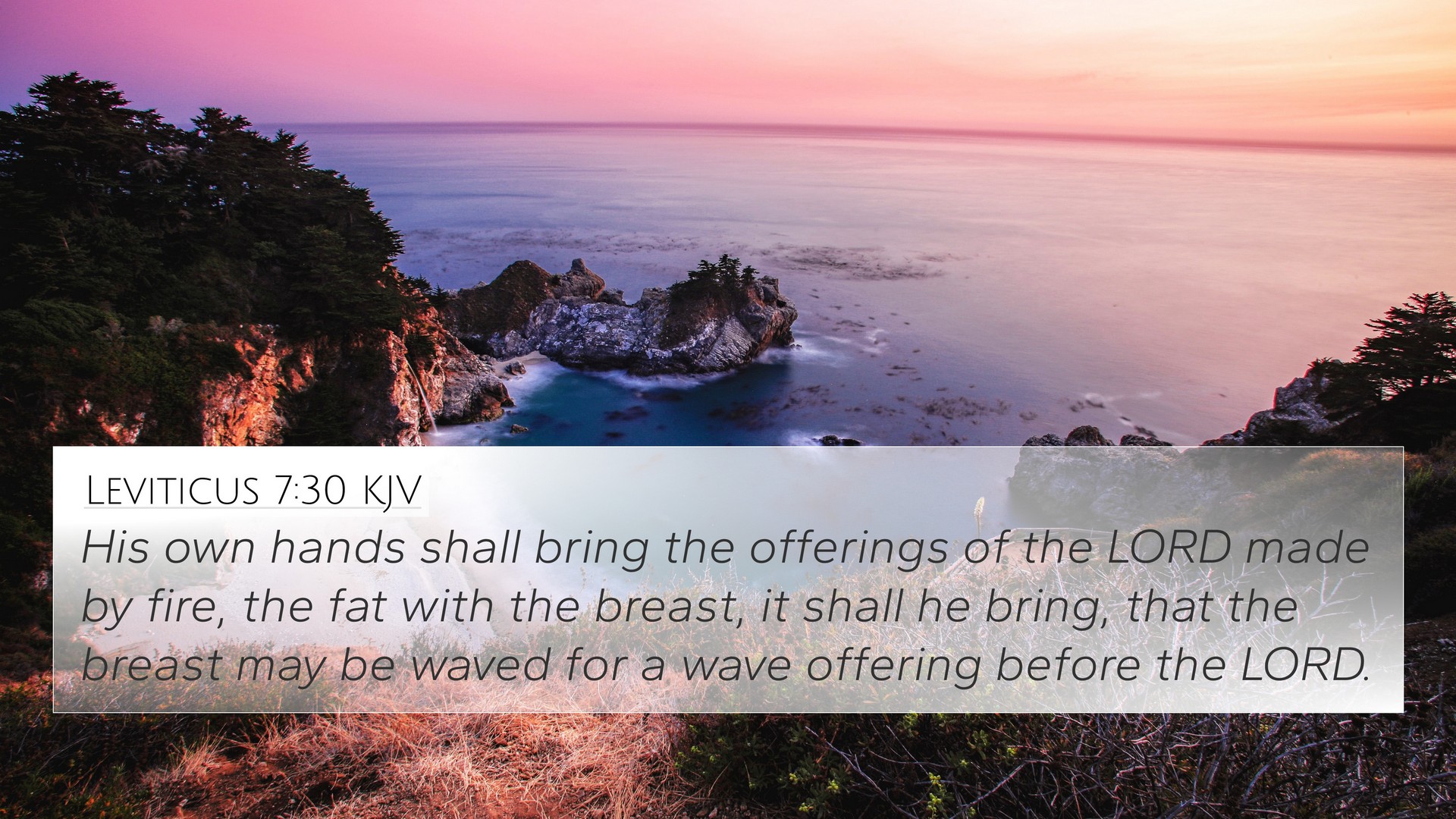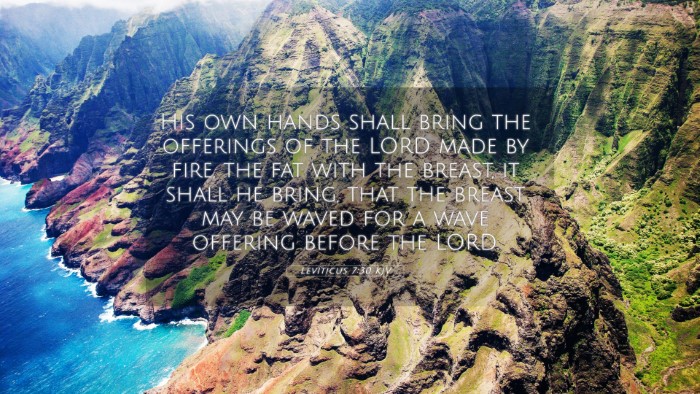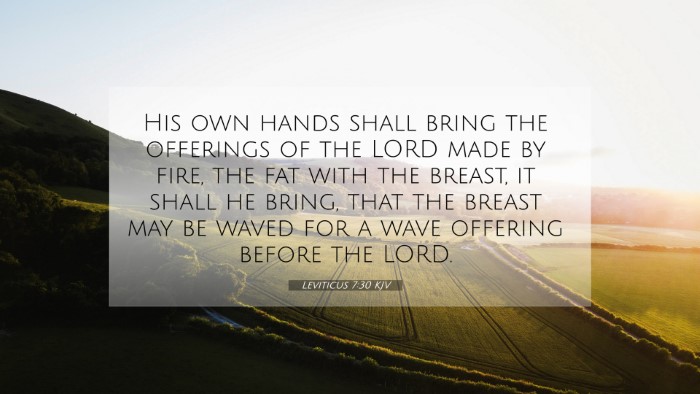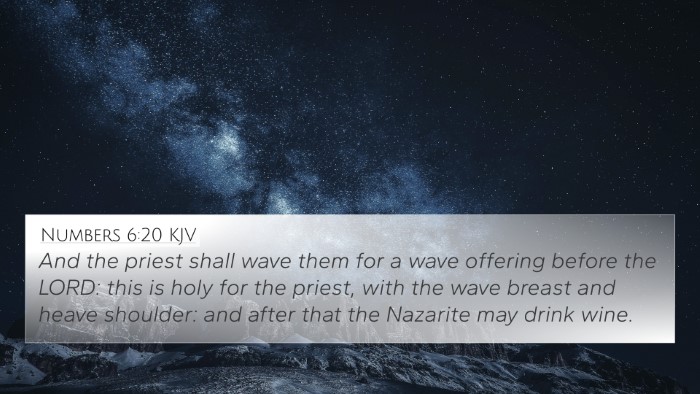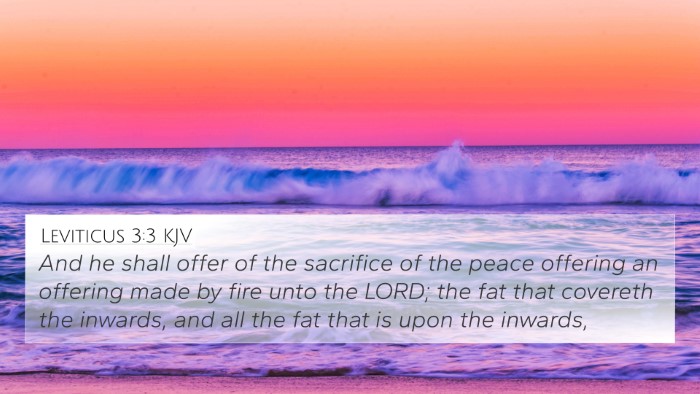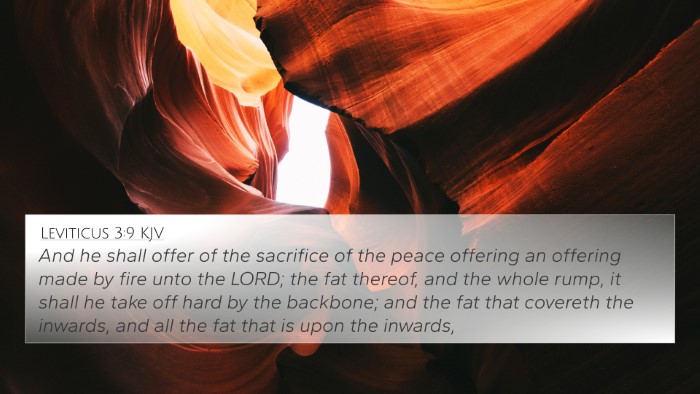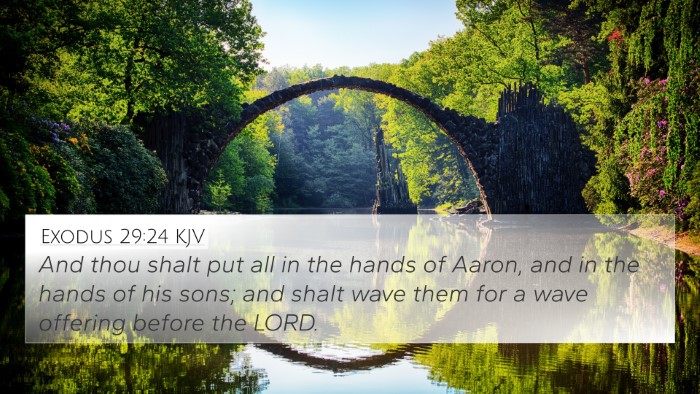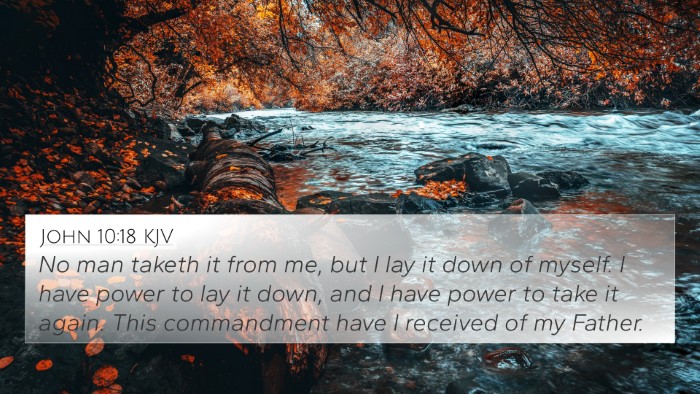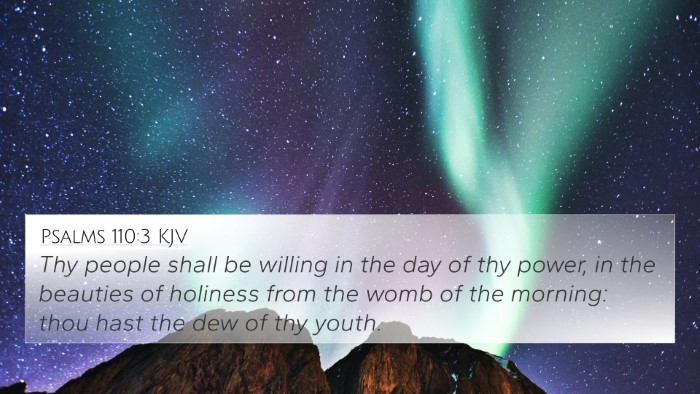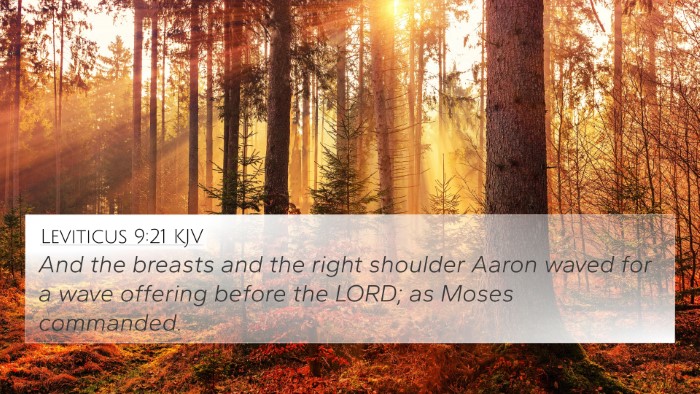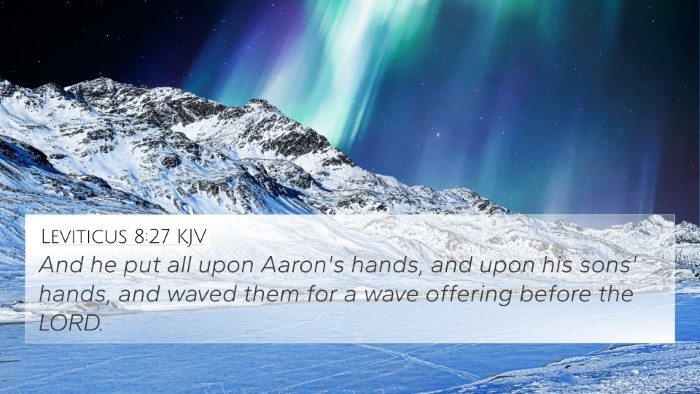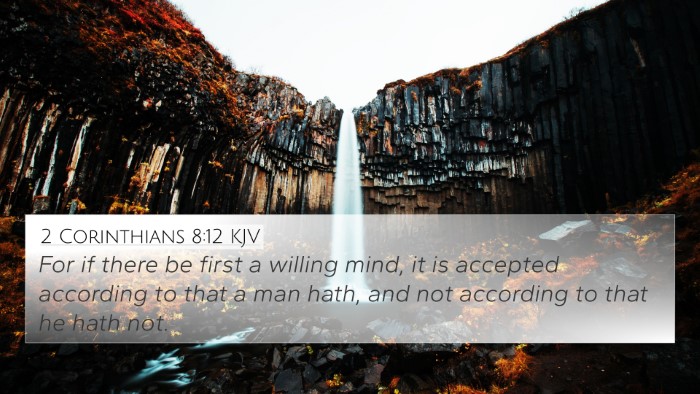Understanding Leviticus 7:30
Leviticus 7:30 states, “His own hands shall bring the offerings of the Lord made by fire; the fat with the breast, it shall he bring, that the breast may be waved for a wave offering before the Lord.” This verse captures a significant aspect of the sacrificial system in the Old Testament and highlights the importance of active participation in worship.
Summary of Key Themes
- Active Participation: The phrase “His own hands shall bring” emphasizes individual responsibility in offerings.
- Divine Acceptance: The act of bringing the offerings indicates a desire for fellowship with God.
- Symbolic Acts: Waving the breast symbolizes presentation before God, signifying acceptance.
- Sacrifice and Offerings: This verse reiterates the importance of sacrifices in the worship practices of ancient Israel.
Bible Verse Cross-References
Leviticus 7:30 connects profoundly with other scripture passages that deal with themes of sacrifice and worship:
- Exodus 29:24-26: Instructions on bringing offerings before the Lord.
- Numbers 6:20: The wave offering as part of the priestly blessings.
- Hebrews 13:15: Offering sacrifices of praise—the New Testament extension of worship.
- Romans 12:1: Presenting oneself as a living sacrifice, a theme resonating from the Old Testament practices.
- Leviticus 3:1-5: The context and procedures associated with peace offerings.
- Leviticus 9:23-24: God’s glory manifesting during the offerings.
- 1 Peter 2:5: Being living stones, offers a spiritual parallel to Old Testament sacrifices.
Insights from Commentaries
Different commentators hold valuable insights into the interpretation of Leviticus 7:30:
- Matthew Henry: He emphasizes the significance of personal involvement in sacrifices. Henry explains that every individual, by bringing his offerings, acknowledges God's provision and expresses gratitude.
- Albert Barnes: Barnes comments on the necessity of the physical act of bringing offerings. He notes that these actions symbolize a deeper spiritual truth about dedicating oneself to God.
- Adam Clarke: Clarke observes that the waving of the breast signifies both acceptance before God and a plea for divine favor, correlating it with New Testament principles of worship.
Thematic Connections
Leviticus 7:30 encourages a broader understanding through thematic Bible verse connections:
- Theme of Worship: It encompasses the concept of giving one's best to God, reflected in both Old and New Testaments.
- Theme of Sacrifice: Throughout Scripture, sacrifice serves as an essential bridge between humanity and God, culminating in Christ’s ultimate sacrifice.
- Theme of Community: The communal aspect of offerings highlights the collective relationship of the Israelites with God, which can relate to the Church's community today.
Tools for Bible Cross-Referencing
To delve deeper into cross-references, consider using the following tools:
- Bible Concordance: A systematic list of words in the Bible aids in locating themes and connections.
- Bible Cross-Reference Guide: Specific guides help navigate through related scriptures effectively.
- Bible Chain References: A method for following thematic paths through different passages.
- Cross-Reference Bible Study: Engaging in themed studies based on particular verses enhances understanding.
- Bible Reference Resources: Utilize various publication resources for comprehensive scriptural cross-referencing.
Conclusion
In summary, Leviticus 7:30 serves as a vital link in the understanding of biblical worship practices, emphasizing active participation and the heart behind sacrifices. Connecting these verses through inter-Biblical dialogue allows for deeper spiritual insights and illustrates the continuities between Old Testament sacrifices and New Testament worship.
